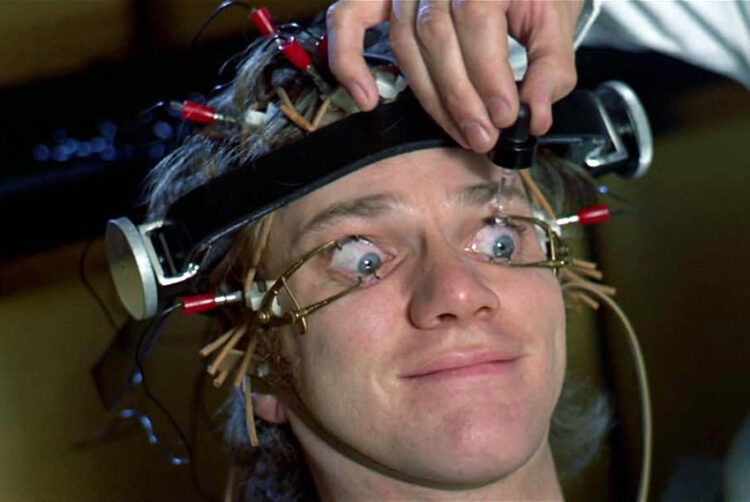Everything you wanted to know about attention but were too afraid to ask

Opinion
To cut through the noise, brands must focus on genuine engagement. It requires a complex understanding of attention that varies based on brand and consumer interactions with devices, content, media and platform.
Today’s media is anything but simple. The digital age has fragmented audiences across countless platforms and the traditional eSOV (excess share of voice) model made famous by Les Binet and Peter Field — which was predicated on all media being relatively equal in terms of impressions — is becoming an increasingly unreliable predictor of brand and business growth.
Simply investing more isn’t a guarantee of success. And although reach will always be a cornerstone of media planning, brands must now factor in how to capture and maintain consumer attention in its more atomised forms.
And they must do so by coveting it as the complex, finite and highly fractured resource it has become. This makes attention a proxy for what we might term “quality reach” to ensure brands get noticed and registered at scale.
Furthermore, understanding and strategically targeting category entry points (the specific thoughts, needs or situations that trigger a consumer to think about a particular product category) becomes crucial for driving mental availability in this increasingly fragmented landscape, where consumers juggle multiple media behaviours across devices, where mass reach through a single channel is increasingly elusive.
Complexity of attention
This all amounts to a major shift.
Attention, in an overstimulated world, is hard to both understand and acquire. To cut through the noise and avoid being ignored or blocked, brands therefore need to focus not only on exposure alone but on genuine engagement.
Here at Hearts & Science, we call this attention-led planning. It recognises that not all impressions are created equal and that the quality of engagement needs to be balanced with the quantity of exposure.
It’s about prioritising how, when and where consumers engage with content, focusing on the contexts that encourage meaningful interactions.
This definition of attention reflects the complexity of the topic: it is not a one-size-fits-all metric and varies based on brand and consumer interactions with devices, content, media and platform.
For example, longer attention spans are ideal for building new memory structures, sharing complex stories and appealing to broad audiences. Shorter attention spans are not necessarily less valuable, though — they can effectively reinforce existing brand perceptions, support simple product launches and maintain a brand’s mental availability.
The key is to match the right kind of attention with the right strategic goals.
Moreover, despite a general bias in the way many people discuss and measure attention, it is not only visual. It can be active or passive and engage multiple senses, including audio, emotional and even physical experiences.
Although this adds further layers of complexity, this broader understanding allows advertisers to craft campaigns that connect with consumers in multisensory ways, offering more opportunities to capture and sustain attention.
What attention-based planning looks like in practice
When Allwyn became the new operator of The National Lottery in 2024, it faced a more competitive landscape than when the lottery first launched in 1994.
With new entrants increasing category media spend by 63% in four years, simply increasing spend was not a sustainable solution. Taking on this new client brief, Hearts & Science looked to drive efficiency through smarter channel planning focusing on capturing attention.
As part of a wider project, we wanted to understand Allwyn-specific attention scores, identifying elasticity versus industry benchmarks to develop a planning approach that could be used portfolio-wide and cross-market.
A partnership with Amplified helped implement a customised solution, based on the attentionTRACE system, for social media and YouTube, while collaboration with the Omnicom Media Group AV Attention Panel helped complete the picture.
This data provided granular insights, allowing second-by-second analysis of media and creative performance. The ability to track attention decay across different placements enabled more precise campaign planning, distinguishing between formats that required sustained attention and those designed for quick impact.
The findings informed more efficient media allocation, identifying placements that delivered attention at a lower cost and revealed rich insight down a creative level. For example, we were able to determine that creative elements such as bespoke music, countdowns and first-person perspectives were particularly effective in holding attention.
Across the National Lottery portfolio of games, factoring in attention into media has helped contribute to major successes. Notable increases across brand metrics include a 10.3% boost in ad recall for Lotto and a 20.6% increase for Set for Life year on year. Higher attention also drove measurable increases in recall and has seen the impact flow through to purchase intention.
So is attention-led planning the right approach for every brand and every situation? No, it’s not a binary issue. But it gives us another strategic lens for smarter media planning to ensure that reach translates into meaningful impact.
Q&A with Dr Karen Nelson-Field
 Nelson-Field, founder of Amplified and author of The Attention Economy, is an expert in using human-based attention measurements to change the way the media market operates.
Nelson-Field, founder of Amplified and author of The Attention Economy, is an expert in using human-based attention measurements to change the way the media market operates.
We spoke with her about the shifting dynamics of this space and what marketers need to know as the landscape continues to evolve.
If you could change one misconception about attention in media, what would it be?
That binary viewability proxies with a sprinkle of attention are “good enough”. They’re not. Human attention isn’t binary; it’s time-bound.
We know that the more time children study, the better their grades. Marketers adjust ad length based on storytelling needs and publishers design streaming algorithms around how long viewers engage with different genres.
Why do some vendors struggle to grasp the importance of attention time in ad effectiveness?
Simple: vendors sell what they can measure and buyers often settle for what’s easy.
Could you share some surprising findings from your research on attention to date?
Attention science isn’t just theory — it’s a hard science with predictable, repeatable patterns.
Many assume that attention is random or highly individual but, after analysing more than 38bn human data points, we’ve uncovered two things most people get wrong. People think they control their own attention patterns — they don’t. People believe their viewing habits are unique — they’re not.
Attention follows structured, scientific laws, not personal choice or intuition. These patterns hold true across different people, platforms, formats, countries. This means marketers no longer need to rely on gut feel or assumptions — the data exists, the models are reliable and the rules are clear.
As technology advances, what do you see as the future of attention in media?
The future lies in real-time creative and media synchronisation, where media and creative unify and adapt dynamically based on live attention signals.
Imagine a world where ads adjust in real time, responding to actual human attention rather than static assumptions. If attention is high, messaging can extend to deepen engagement; if attention drops, the creative can shorten or shift to recapture interest, using more emotive or attention-grabbing elements.
This isn’t just about capturing attention; it’s about orchestrating it, ensuring every ad is delivered at its most effective moment, in its most impactful form.

 Simon Carr is chief strategy officer and Tessa LeGassick is head of connections planning at Hearts & Science
Simon Carr is chief strategy officer and Tessa LeGassick is head of connections planning at Hearts & Science




